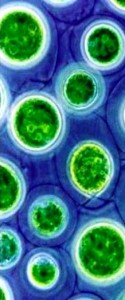 Update and clarification on the recent story we published titled “NFIDAsia to expand algae farming in Myanmar.” The published story was composed from two sources: www.pr.com/press-release/483369 and www.elevenmyanmar.com/national/3711-nfidasia-to-launch-algae-farming-in-myanmar
Update and clarification on the recent story we published titled “NFIDAsia to expand algae farming in Myanmar.” The published story was composed from two sources: www.pr.com/press-release/483369 and www.elevenmyanmar.com/national/3711-nfidasia-to-launch-algae-farming-in-myanmar
NFIDAsia to bring algae cultivation as a combined agriculture & aquaculture relationship to speed rural development through agricultural enhancement. I would like to add comments to fill in and correct on some minute details. ElevenMyanmar’s comments will be indicated by Eleven and myself DD.
Eleven: Nation First International Development Asia (NFIDAsia) Company is planning to launch algae farming in Yangon, the commercial hub of Myanmar, David DuByne from NFIDAsia said.
DD: That is true, NFIDAsia’s offices are in Yangon in regards to partnering and support, but the actual algae farming facilities will be located in either the Central Dry Zone or in the Irrawaddy Delta west of Yangon.
Eleven: NFDIAsia has signed a MoU agreement with Hisham Koh & Associates (HKA) which carried out the UNDP’s development programs in Myanmar to facilitate algal farming products in the rural areas throughout the country.
DD: Mr. Hishamuddin Koh, supervised and edited Background Papers for the Development of Policy Options in Myanmar, a high profile study sponsored by UNDP in 2011. His ideas for a bio-village based network of overlapping industries has been adopted in rural areas countrywide. The UNDP did not facilitate algal farming products in the countryside, NFIDAsia and their partners will be responsible for that.
Eleven: “NFIDAsia Company is not a business which will take Myanmar’s money out to other countries. The project would be beneficial for both sides, including local people. We will grow the algae, manufacture it locally and distribute the finished products around the world. The company will not manufacture the products in other countries by only taking the raw materials,” Johnathan Pierce, President of NFIDAsia said.
DD: NFIDAsia’s business model for commercial algal farming is symbiotic not extractive. We wish to couple industries together by creating an algae value chain in country first, at the same time create our branding, from farm to end buyer. As an export crop with interconnection in other agro based segments of Myanmar’s economy makes it a win, win, win as the rural economy grows. High value aqua-culture products for accelerated rural development.
Eleven: The algae farming can be carried out at places like fish farms.
DD: This is true, especially fish farms that have lost the ability to hold water. Our local JV partner Nile Industries has the equipment to sculpt raceway ponds with GPS precision. We create value in land that has lost its agriculture viability.
Eleven: While algae are an exciting profitable source of bio-fuel or commercial animal feeds for aquaculture and agriculture, it can also be a sustainable source for a broad range of high dollar value products. From food to chemicals, as well as cosmetics and pharmaceuticals, multiple products from the same algal bio-mass are possible, Myanmar Business Network reported.
DD: All true, there are so many uses for algae, but NFIDAsia is focused on producing the highest quality cultivars for human consumption as well as extracts.
Eleven: The president also said that the company is successfully operating the algae farming businesses in several countries like Japan, US and Israel. The company expected that their operation tasks will be successful in Myanmar combined with its international experiences.
DD: The group of engineers, scientists, and branding specialists have started or operated farms in those locations (Japan, US, Israel), but also add China, Philippines and India as well. NFIDAsia does not operate farms in the above countries, but the combined years of experience that NFIDAsia is bringing to Myanmar has and still does operate farms.
Eleven: Algae are suitable for cultivation and production in central Myanmar. However, the techniques are needed to produce algal-based farming products for export. Spirulina production is being carried out in Butalin Township of Sagaing region, in upper Myanmar and it’s widely used as a nutritious food in 70 countries.
DD: Yes, Spirulina harvesting methods in the Crater Lakes could be enhanced in terms of standardized quality and drying methods to preserve product. Algal raceway pond cultivation is a different animal all together. The Crater Lakes have natural alkalinity levels that allow growth of Spirulina in an uncontrolled environment. We will grow cultivars in controlled conditions where every milliliter of water can be monitored for optimum yield. For those of you interested; Coordinates for Twinn Win and Win Po Twin Lakes, Saigang Division, Myanmar 22’11’16’45”N, 95’00’29’ 49” E (Central Myanmar)
NFIDAsia President Jonathan Pierce adds, “If funded by government as the center financial contributor to the community, it will only require going to the funder once. After 60 months this project has the ability to fund many other municipal projects, schools, aid and infrastructure for many years to come and repay initial cost.
“This, as a community or government project run and managed by our team, will employ 100-plus locals and provide higher pay scale than average with specialized training for the employees. Micro algae farming, harvesting, dehydrating, bagging, marketing and exporting is a reach, to say the least, for a poor small land holding farmer. This is not a project for a farmer with one acre, it is a specialized science requiring constant oversight to ensure the highest grade products using tens of acres.”
Original Link to Algae Industry Magazine Article about Myanmar Algae Program
Original Article from ElevenMyanmar about NFIDAsia's Algae Farming Program
